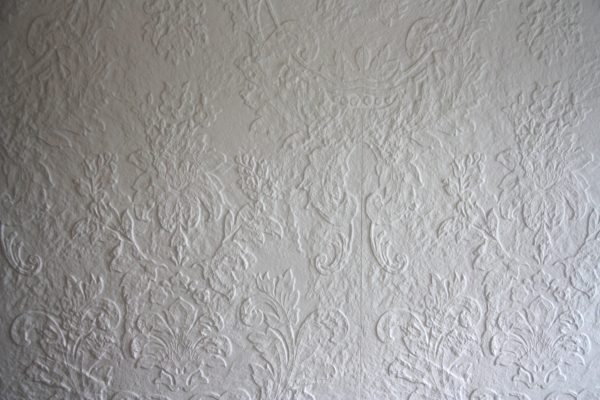
Drywall texturing is a wonderful way to make your drywall more visually appealing and cover up minor imperfections in the drywall installation. Several different texturing techniques can make your drywall more or less subtle. While drywall texturing can definitely be done by DIYers, many homeowners elect to hire a service professional because the job can be extremely messy and professionals have machines specifically designed for drywall texture spraying. Instead of sprayers, rollers can also be used, but the result is almost never as good.
Knock Down
Knockdown drywall texture is a more subtle kind of drywall texturing. Homeowners should use a trowel when trying to create a similar effect to a professional. (Knock down drywall is sometimes referred to as skip trowel.) To create the effect the drywall is watered-down to a soupy consistency. If mixed right, the drywall should form stalactite formations when applied that are then “knocked down” to create a finished, mottled look for your drywall. The look of knock down texturing is most often compared to stucco. More complex variations of the knock down technique include adding sand to the mix to create added texture or adding paint to the mix to prevent having to paint it after the drywall has dried. Because the mix of the drywall needs to be fairly precise these variations should probably be left to a professional to avoid wasting an entire batch of drywall mix.
Popcorn Drywall Texture
Popcorn drywall texture is a more noticeable kind of drywall texturing. Applied in a similar fashion to knockdown drywall, the two main differences are that you leave your drywall mix in a thicker consistency and instead of knocking down stalactites, your drywall should form a popcorn or cottage cheese appearance. While all drywall texturing will increase the sound absorption of your walls, the thicker popcorn formation is usually the best for this purpose, although certainly not soundproof.
Most popular in the 60s and 70s, popcorn drywall has become increasingly less popular than other texturing options. If you’re considering removing pre-existing popcorn drywall plan for another extremely messy process and get a small piece of the drywall plaster tested for asbestos. It’s not uncommon for asbestos to exist in early popcorn drywall. Use our Popcorn Ceiling Removal Cost Guide for calculating retextured ceiling costs.
Ready to start your drywall texturing?
Find ProsOrange Peel Drywall Texturing
Orange peel drywall texture must be done with a spray gun as it requires high air pressure and a small nozzle on the gun. The thin material and rapid spraying technique creates a lighter texture that most closely resembles an orange peel. In order to create a uniform texture, the spray gun needs to be moved at a relatively constant speed and this often requires practice. In other words, if you have the right equipment you can still do this project on your own, but you may need to be patient and invest some time in the project to get it right. You’ll also need to be careful painting this kind of texturing. That said, if you don’t like the look of popcorn on your walls or ceiling but are still looking for something more visually appealing than flat drywall, this may very well be what you’re looking for.
 Nails or Screws for Hanging Drywall: Which Works Better?
Nails or Screws for Hanging Drywall: Which Works Better?  How to Patch Drywall & Fill Cracks
How to Patch Drywall & Fill Cracks  Drywall Basics for the Finish You Want
Drywall Basics for the Finish You Want  Drywall Installation Techniques
Drywall Installation Techniques 

Are You Familiar With This Topic? Share Your Experience.